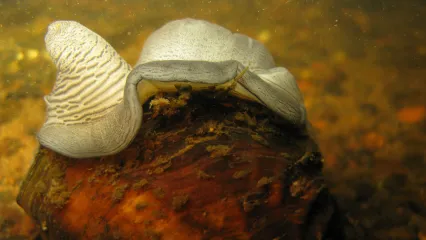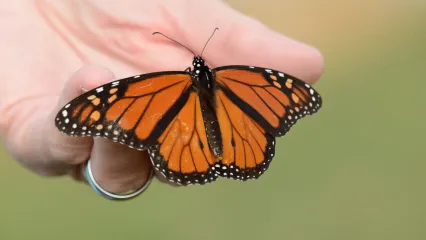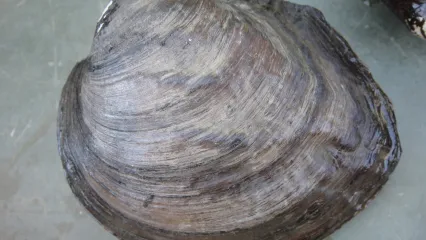
Description
This freshwater clam is approximately four inches in length. The shell has multiple, characteristic bumps and varies in color from greenish to dark brown.
The primary driver of this species’ decline is habitat degradation. Alteration of river flows caused by reservoirs and impoundments has had the most influence. Other threats include river channelization, water pollution, sedimentation, agricultural runoff, and direct disturbance of mussel beds by human activity.
Size
Approximately 4 inches in length.
Habitat
As with most other mussels, this species requires habitat with high water quality, and can typically be found on stream beds that vary from sand to cobble. The winged mapleleaf was historically known to occur in the Boggy, Kiamichi, Neosho, and Little rivers of Oklahoma. Populations currently remain in the Little River, though its status in the other river systems is generally unknown.
Life Cycle
Winged mapleleafs feed by filtering microscopic organisms and organic particles from the water. Though little is known of its reproductive behavior, these mussels are thought to spawn during spring and early summer. Eggs are fertilized by upstream males and develop into mussel larvae known as glochidia, which are released by the females. Glochidia must attach to a host fish, usually blue or channel catfish. After changing into young mussels, they fall to the stream bed and mature.

